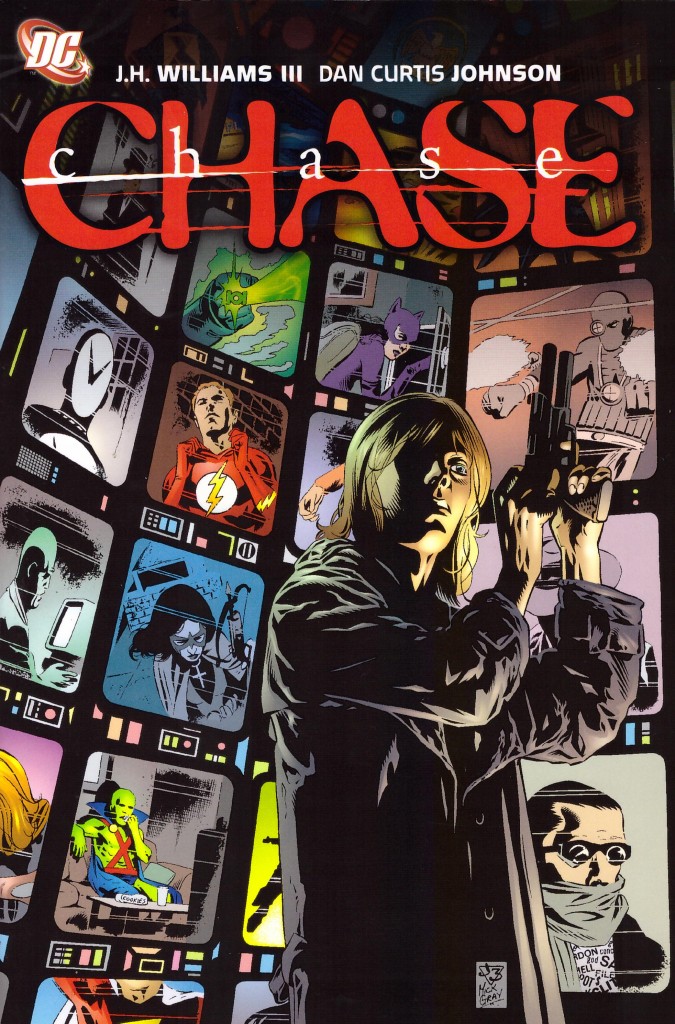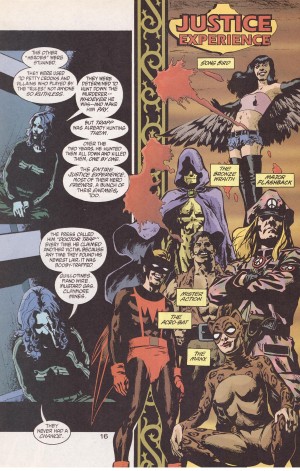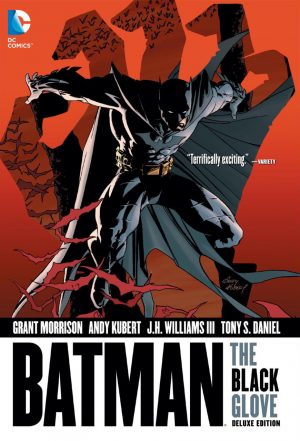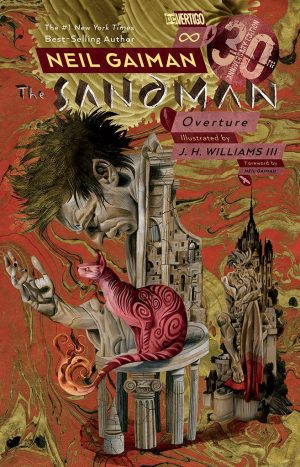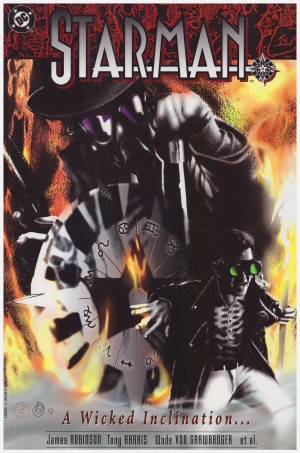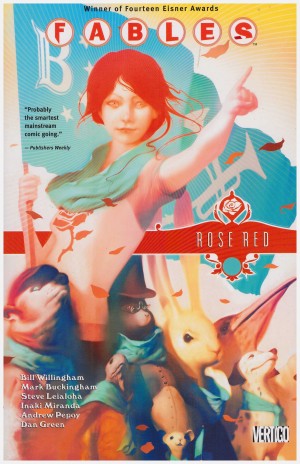Review by Ian Keogh
Cameron Chase has a secret, and it provides a convenient ending to her first appearance in the Batman story opening this collection of her 1998 solo series. When introduced she’s just about to begin working for New York’s Department of Extranormal Operations, a covert agency keeping tabs on super powered types, and she’s established as having a seemingly irrational hatred of superheroes. This is given novel and credible reasoning later in the book.
That, however, isn’t the reason her series was reissued in paperback fourteen years after its demise. That’s due to most of it being drawn and co-plotted by a young J. H. Williams III, whose career and artistry had prospered and flourished during the intervening years. Williams III is now renowned for the ornate page designs he applies to his projects, and his growth can be charted here with art-deco margins and page borders, circular panels or curved panel borders, spreading the narrative across a double page spread, overlaying panels as if polaroids scattered across a table, and including a wealth of detail. It would be meaningless without being able to project the plot to readers, and he’s already good at that, although the earlier material displays evidence of Williams III finding and growing into his style. A flashback chapter drawn in far more traditional style by Bob Hall is weak in comparison, and the issue drawn by Charlie Adlard early in his career is basic.
Chase, however, deserves recognition for being far more than just a launchpad for the art to flourish. The writing, in conjunction with Dan Curtis Johnson is clever, varied and occasionally experimental, and the personality created for Chase is a job very well done. She’s fighting several demons, and is a spiky and pragmatic character rather than an audience pleaser. The surfeit of super-powered guest stars are a ploy to boost sales on a new title from relatively unknown creators featuring a lead character ostensibly without super powers, but the premise ensures their appearance is natural, not forced. The Teen Titans are worked into Chase’s world in a manner for which there’s really no precedent in superhero comics, and other known characters are equally well integrated.
As the book continues there’s even more depth, as the plots are layered, the stated purpose of a mission not necessarily the real purpose. Johnson’s also unconcerned about including blocks of text to tell the stories more effectively, and when accompanied by Williams III’s art who’s really going to care?
After ten issues Chase’s title was cancelled, but she resurfaced as the DEO investigated villains and heroes in a series of back-up strips. These vignettes offer a little more background information on the organisation, but are so tied into the events of the DC Universe of 2000 and 2001 that few make sense divorced from there. They present some nice art from Rick Burchett and Greg Scott, some acceptable art from Diego Barreto, and some grim, angular art from Eric Canete in a story that appears unconnected, but is written by Johnson and Williams III. The best of these is Chase and partner interviewing those affected by the Joker, about whom it might be assumed nothing new could be said. That’s not the case, and Williams III’s art is great.
Williams III has a sentimental attachment to Chase, whom he’d return as an even less sympathetic character when working on Batwoman while tying into one of the obsessions the DEO has here.
